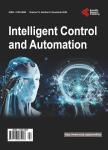Similarities of Model Predictive Control and Constrained Direct Inverse
Similarities of Model Predictive Control and Constrained Direct Inverse作者机构:Department of Process Engineering University of Pannonia Veszprém Hungary
出 版 物:《Intelligent Control and Automation》 (智能控制与自动化(英文))
年 卷 期:2012年第3卷第3期
页 面:278-283页
学科分类:1002[医学-临床医学] 100214[医学-肿瘤学] 10[医学]
主 题:Model Predictive Control Inverse Control Objective Function Closed-Loop Specification Heat Transfer
摘 要:To reach an acceptable controller strategy and tuning it is important to state what is considered “good. To do so one can set up a closed-loop specification or formulate an optimal control problem. It is an interesting question, if the two can be equivalent or not. In this article two controller strategies, model predictive control (MPC) and constrained direct inversion (CDI) are compared in controlling the model of a pilot-scale water heater. Simulation experiments show that the two methods are similar, if the manipulator movements are not punished much in MPC, and they act practically the same when a filtered reference signal is applied. Even if the same model is used, it is still important to choose tuning parameters appropriately to achieve similar results in both strategies. CDI uses an analytic approach, while MPC uses numeric optimization, thus CDI is more computationally efficient, and can be used either as a standalone controller or to supplement numeric optimization.



